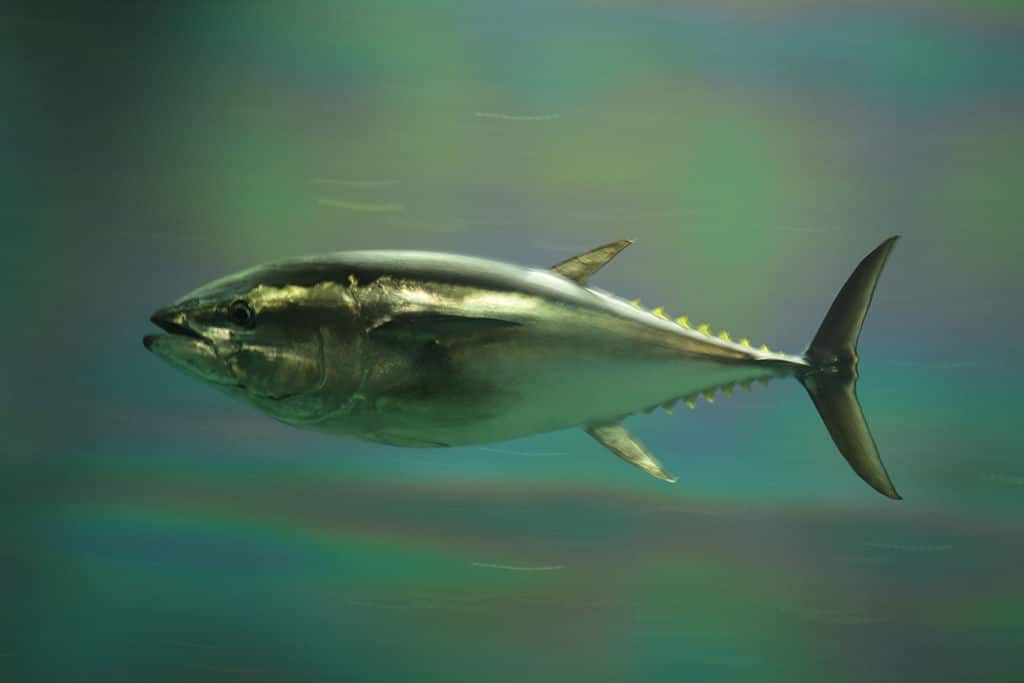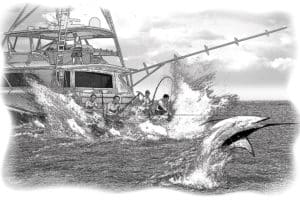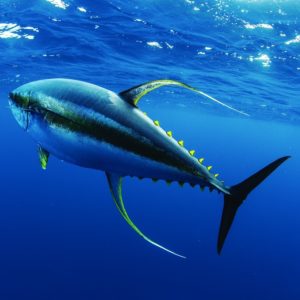
Pacific Bluefin
This past Sunday, a 507-pound piece of Pacific bluefin tuna sold at Tokyo’s Tsukiji fish market. Last year’s tuna broke records and sold for $1.76 million. This year, prices plummeted to **$70,000. **
As far as why the price tanked, Amanda Nickson, director for global tuna conservation for The Pew Charitable Trusts, says that there hasn’t been a finite answer.
“We’re not quite sure why the price dropped,” Nickson says. “There’s been quite a bit of speculation, but thus far nothing to clearly indicate why.”
Nickson wants the public to know more about the predicament of the Pacific bluefin population than the price tag of it being sold in Tokyo.
“The real issue, however, is that there has been little to no public attention given to the plight of Pacific bluefin and the population is in dire straits,” she says.
Pew Charitable Trusts says that this species is severely depleted and backing it up with the most recent scientific stock assessment for Pacific Bluefin tuna, it’s findings: the population is at just 3.6 percent of its original size.
In 2013, these findings and advice from scientists were given to two international bodies that were tasked with managing Pacific Bluefin — the Western and Central Pacific Fisheries Commission and the Inter-American Tropical Tuna Commission. Pew Charitable Trusts says they both failed to act to decrease the catch from current levels, they give a couple background points:
- _The 2013 stock assessment found that the population had dropped 96.4 percent from unfished levels, including a steady decline over the last 15 years. It also found that more than 90 percent of the catch was juveniles. _
_
_
Scientists warned that continuing the fishery at recent catch levels would not improve the species’ status. They also noted that catch limits could be particularly effective for increasing the population size and that further reduction of fishing mortality, especially for juvenile fish, is needed to reduce the risk of the population falling below its historically lowest level.
AdvertisementIn July 2013, the IATTC, which manages Pacific bluefin in the eastern Pacific Ocean, kept catch limits for 2014 at the current levels, ignoring the scientific advice stating that recent catch levels would not improve the decimated status of the species.
At its meeting in September 2013, the WCPFC Northern Committee, which manages bluefin in the western Pacific, adopted a management measure that maintained overall effort levels at the status quo, and set juvenile catch limits at a level that will actually allow countries to increase their catch from last year’s amount – allowing continued overfishing of a population already reduced by more than 96 percent.
_
_
- Each year, the first Pacific bluefin caught is auctioned off at Tokyo’s Tsukiji fish market. Over the last several years, the prices have been steadily rising. In 2011, a Pacific bluefin sold for $396,000. In 2012, one sold for $736,000. And in 2013, a single tuna broke all records and was auctioned off for an astonishing $1.76 million. (Fact sheets – Pacific Bluefin Tuna: The World’s Most Expensive Fish / The Story of Pacific Bluefin Tuna)
Results were provided to overseeing commissions, yet according to Pew Charitable Trusts, those commissions failed to act. So, what can you do?
Amanda Nickson says to let your government know and to support lower bag limits.
“We’d encourage your readers to urge the U.S. government to push for strong conservation measures at the two regional fisheries management organizations,” says Nickson.
She says she believes that the California bag limit is 10-fish per day per angler. Nickson says that there is commercial harvest off southern California, but that it’s small when looking at the big picture.
“There is some commercial harvest, but very little,” she says. “It’s definitely an insignificant part of the overall catch.”
When getting down to specifics, Nickson says to support the lower bag limit to help correct the issue.
“It’s inexcusable given the stock status,” she says. “The U.S. tallied 617 metric tons of recreationally caught** **Pacific bluefin in 2012, the highest take in a decade.”







